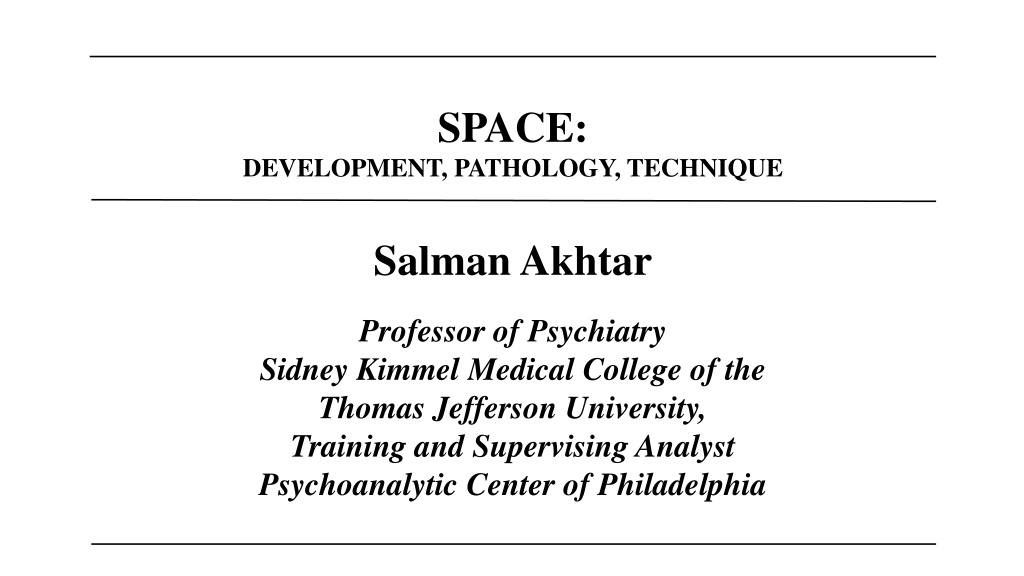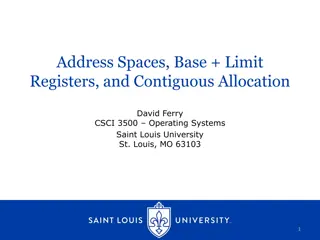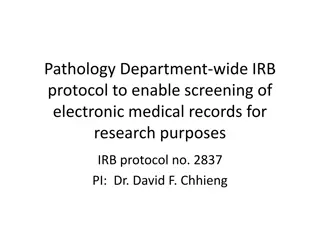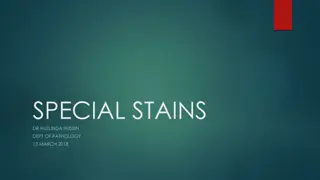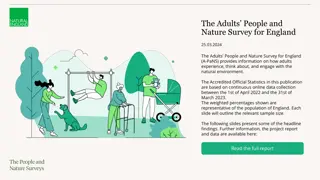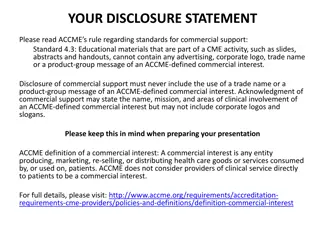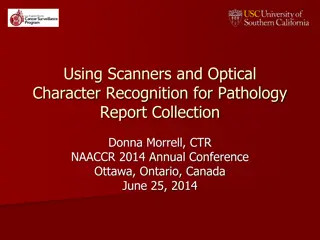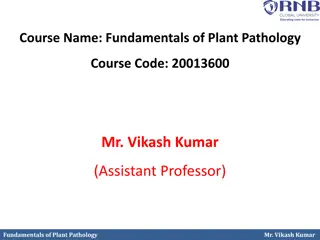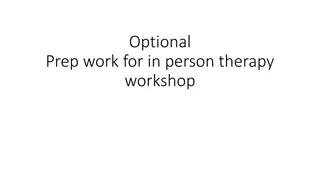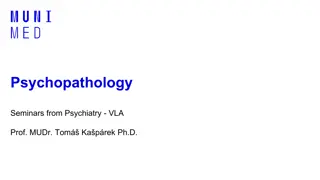Exploring Spaces: Development, Pathology, and Techniques in Psychiatry
Delve into the various dimensions of space in psychiatry, from development and pathology to techniques for effective clinical practice. Discover the importance of optimal distance, cultural influences, and the impact on mental and physical well-being. Gain insights into managing disorders like agoraphobia and claustrophobia, and learn about the significance of space in therapeutic interactions.
Uploaded on Sep 22, 2024 | 0 Views
Download Presentation

Please find below an Image/Link to download the presentation.
The content on the website is provided AS IS for your information and personal use only. It may not be sold, licensed, or shared on other websites without obtaining consent from the author. Download presentation by click this link. If you encounter any issues during the download, it is possible that the publisher has removed the file from their server.
E N D
Presentation Transcript
SPACE: DEVELOPMENT, PATHOLOGY, TECHNIQUE Salman Akhtar Professor of Psychiatry Sidney Kimmel Medical College of the Thomas Jefferson University, Training and Supervising Analyst Psychoanalytic Center of Philadelphia
SPACE A number of porcupines huddled together for warmth on a cold day in winter; but, as they began to prick one another with their quills, they were obliged to disperse. However, the cold drove them together again, when just the same thing happened. At last, after many turns of huddling and dispersing, they discovered that they would be best off by remaining at a little distance from one another. Schopenhauer
SPACE TYPES Physical space Mental space Imagined and imaginary spaces Geopolitical space
SPACE DEVELOPMENT Ocnophilia & philobatism Optimal distance Negative identity of adolescents and later return to conventionality The role of culture
SPACE PATHOLOGY Agoraphobia & claustrophobia Agoraphilia Difficulties of optimal distance in personality disorders Certain marital problems
SPACE TECHNIQUE Clinical space and its holding function Adequate distance in the initial interview Increased distance upon beginning to lie down Treatment breaks Accidental encounters with the patient
